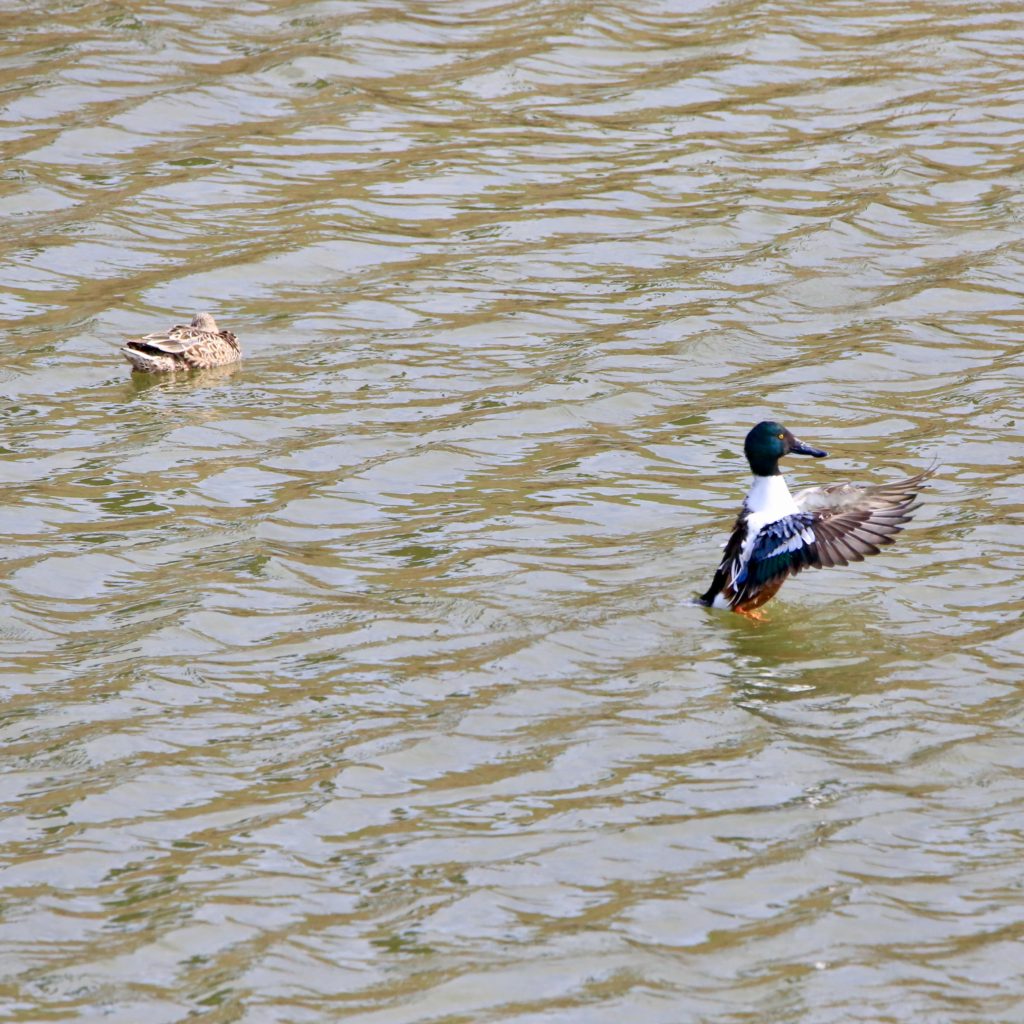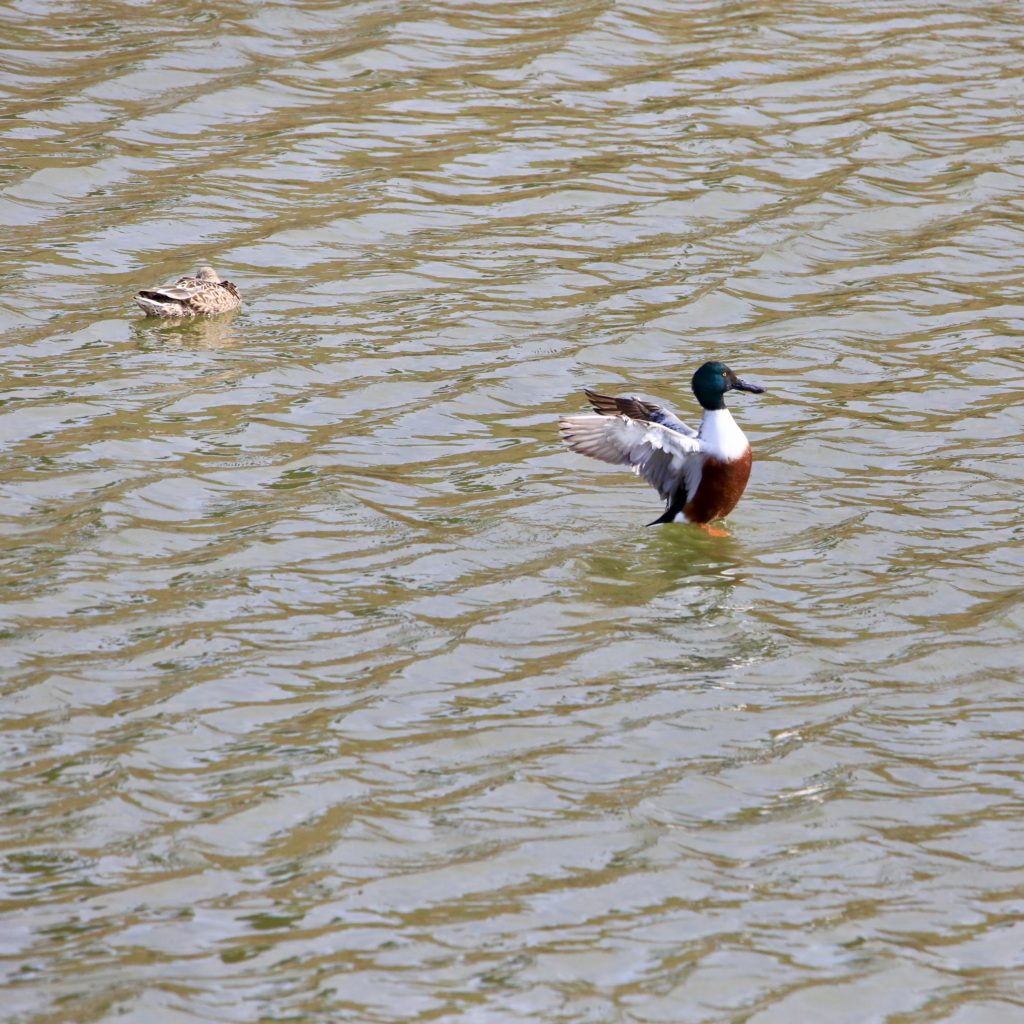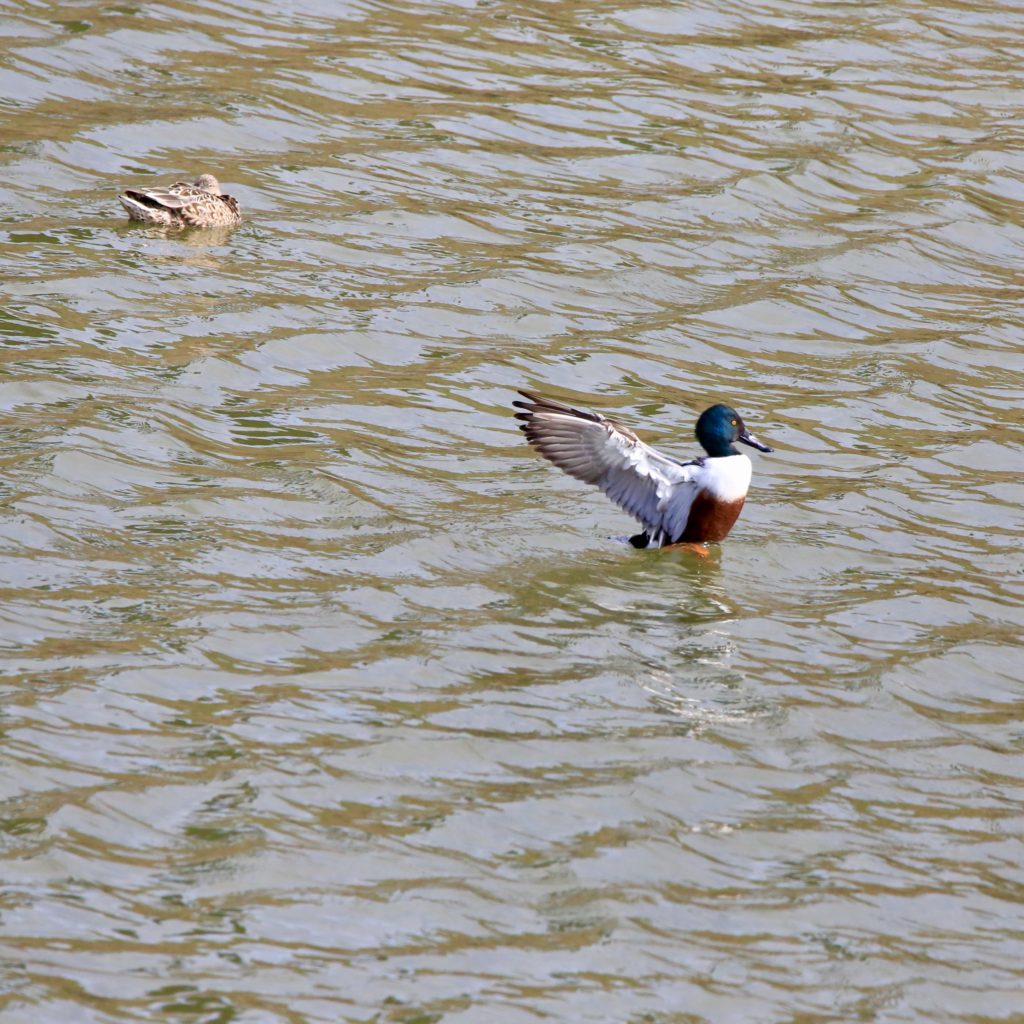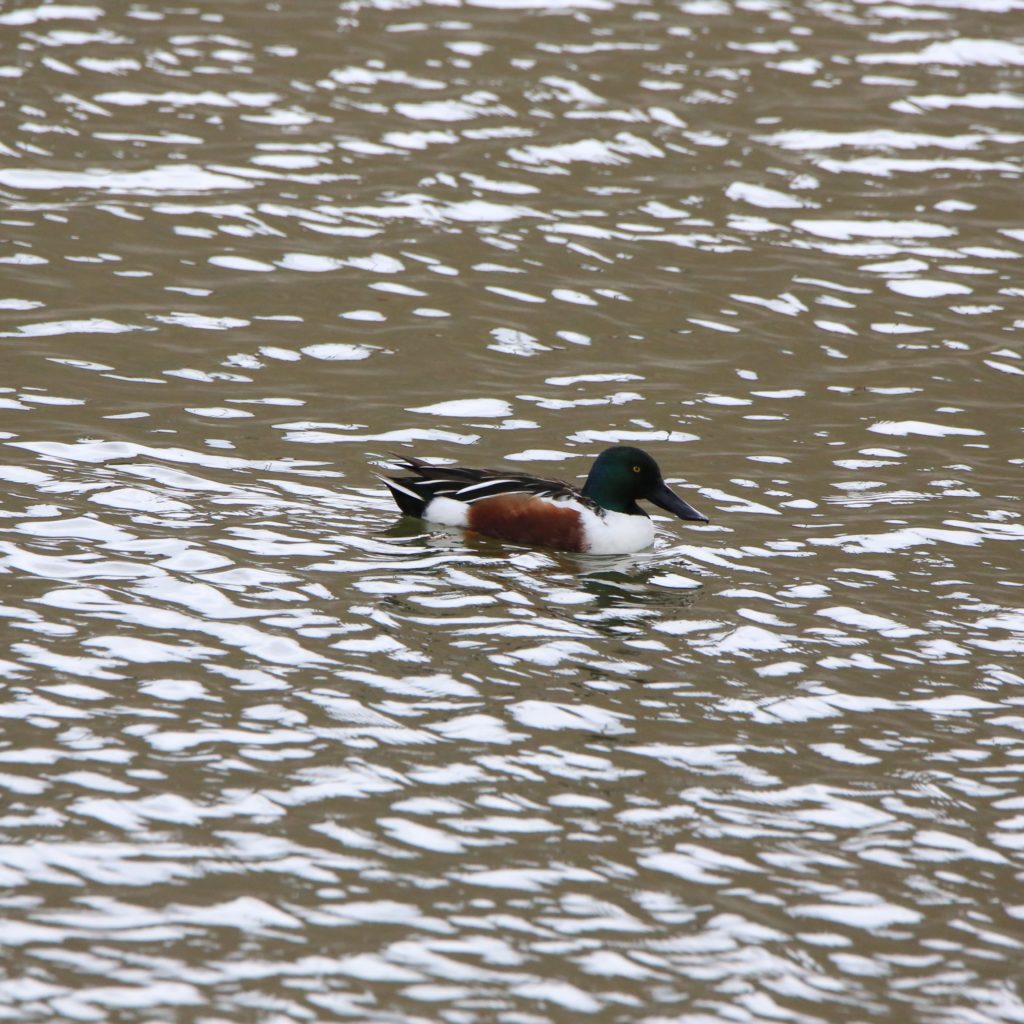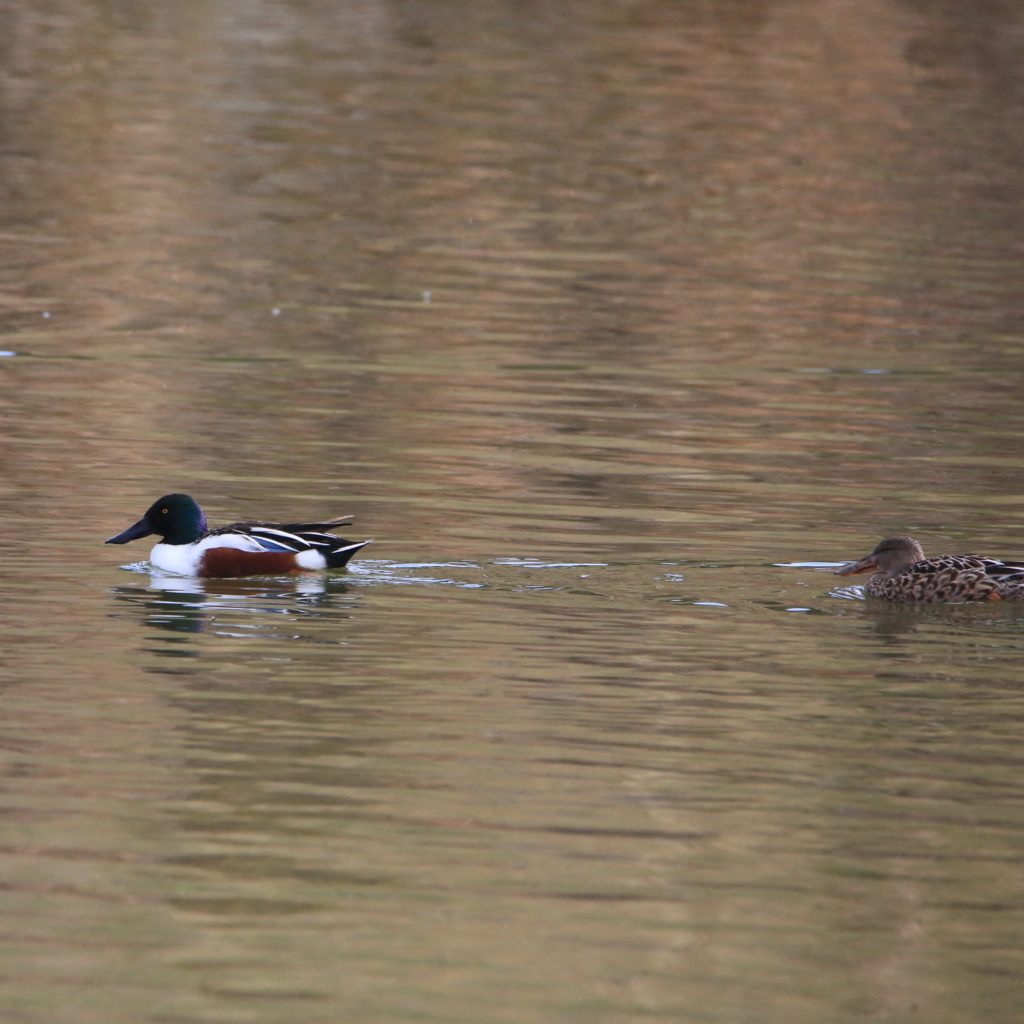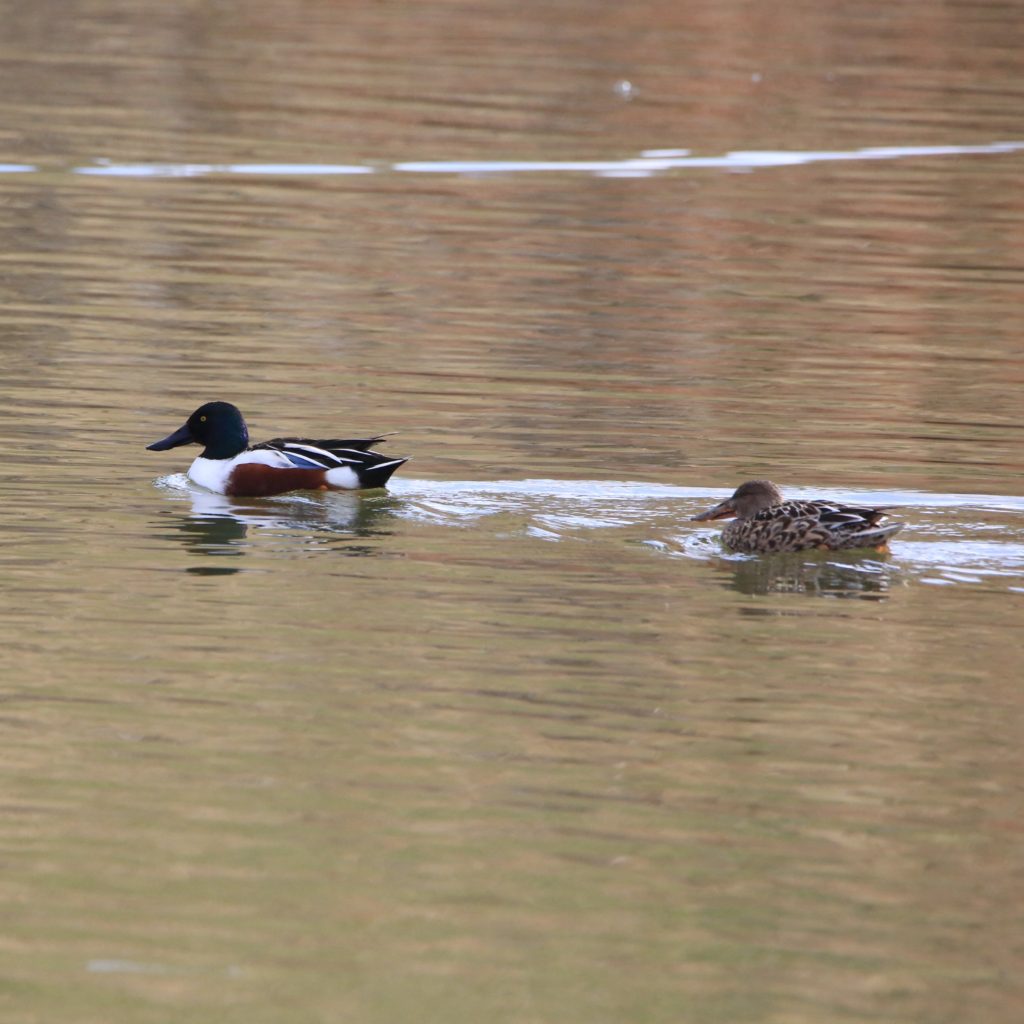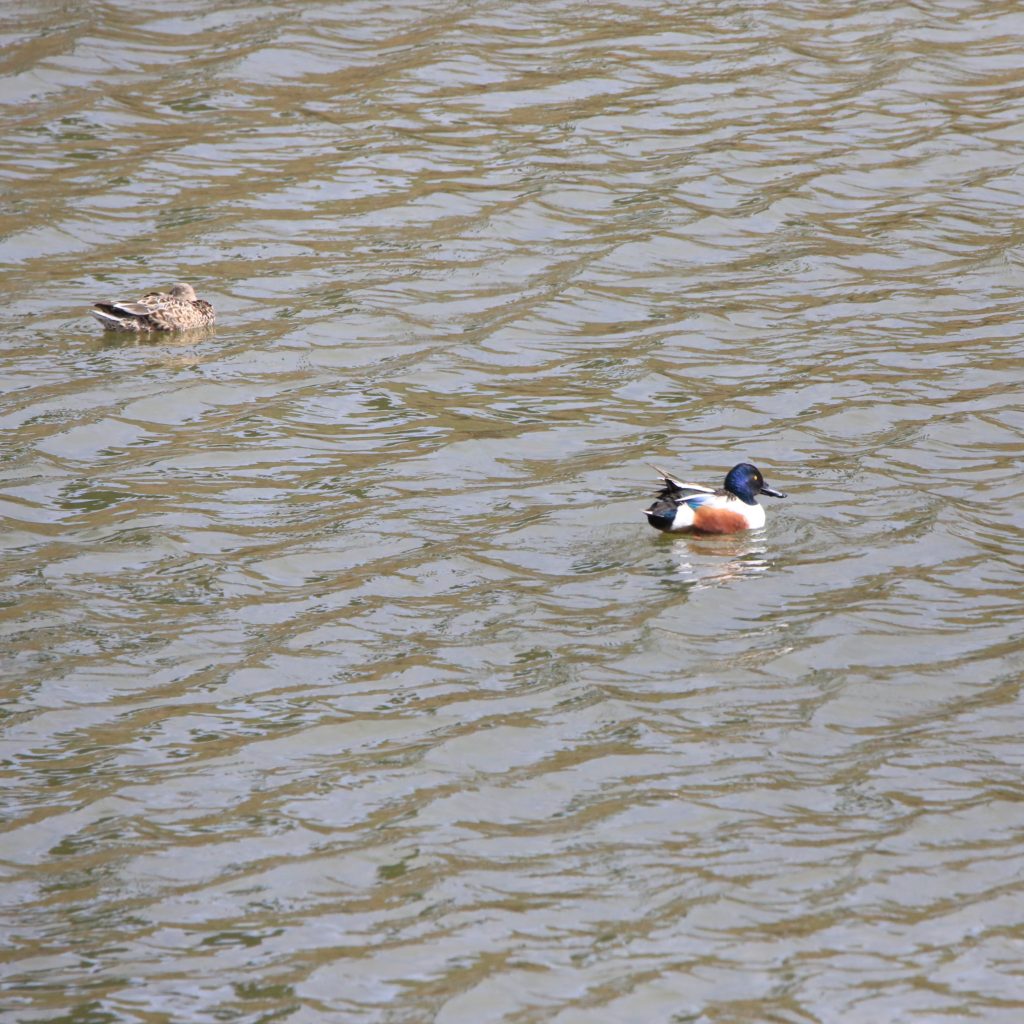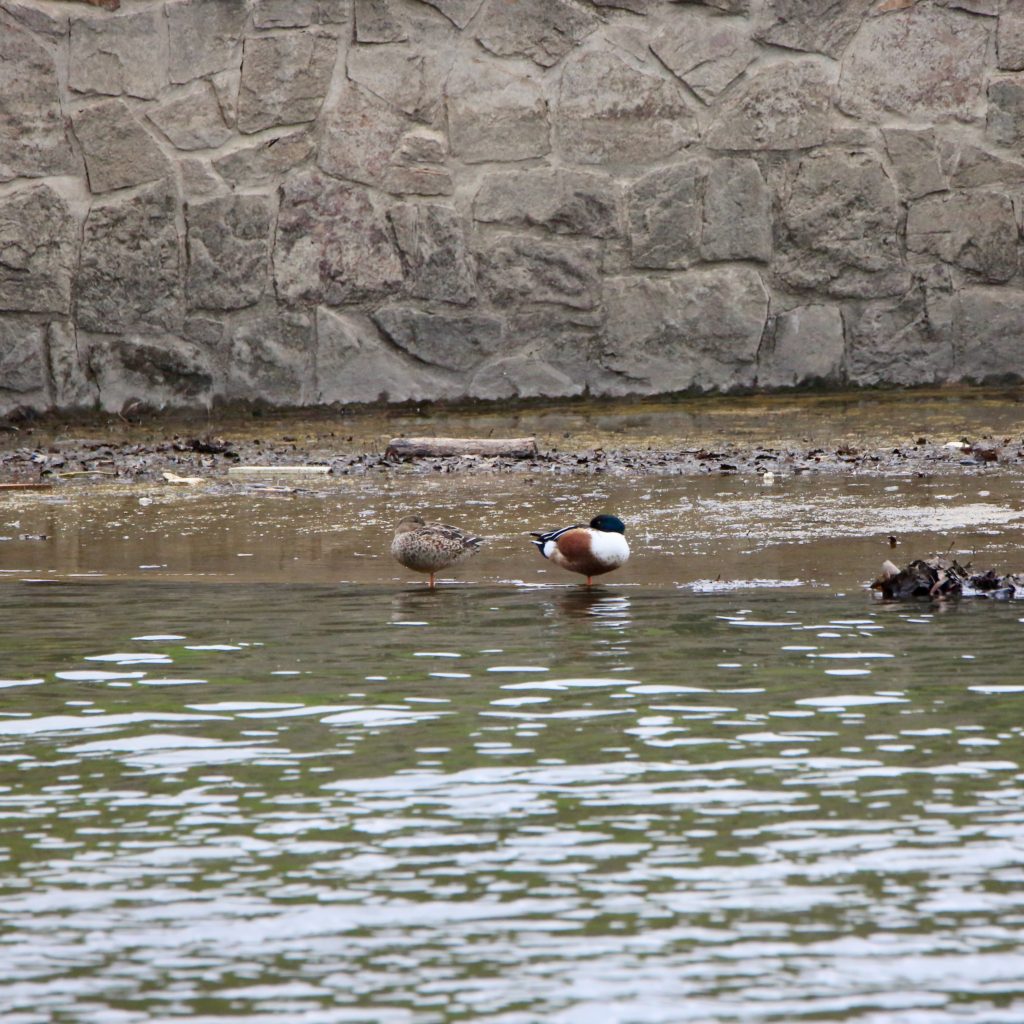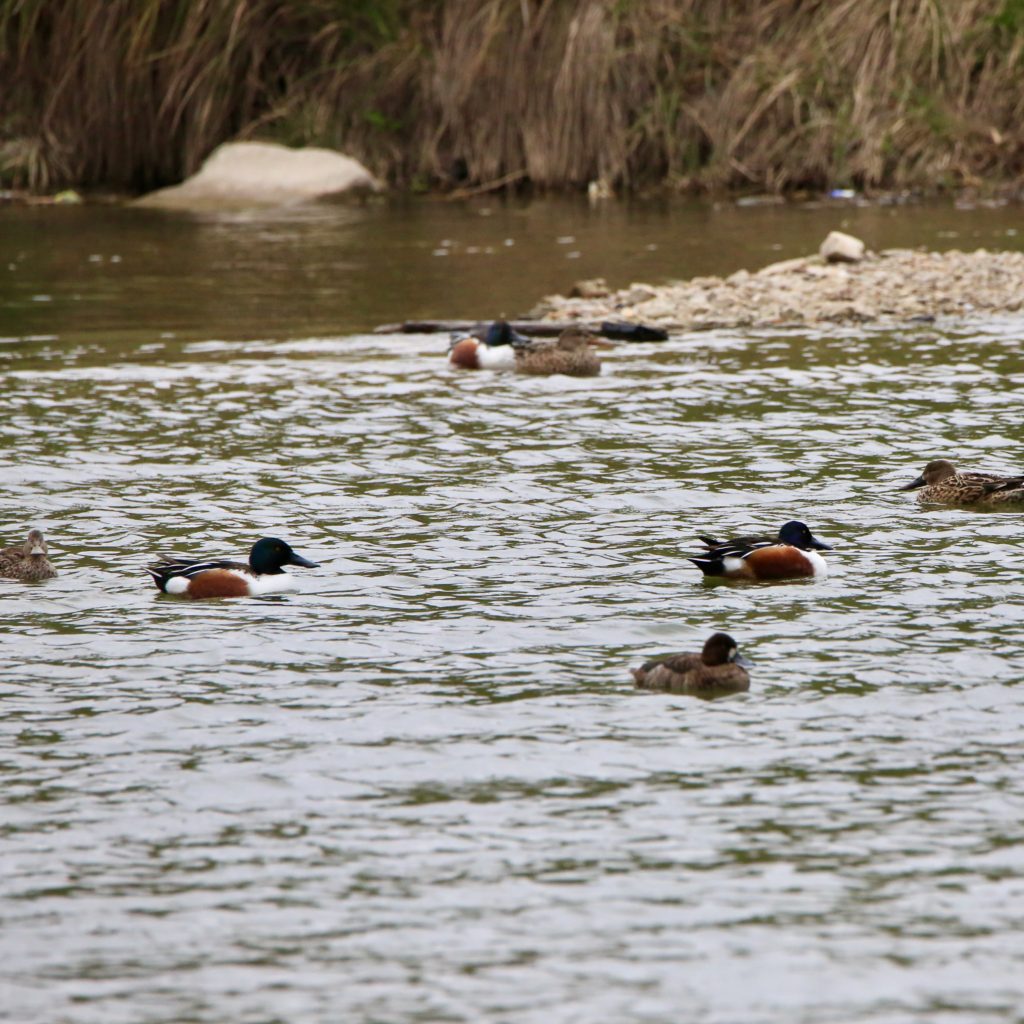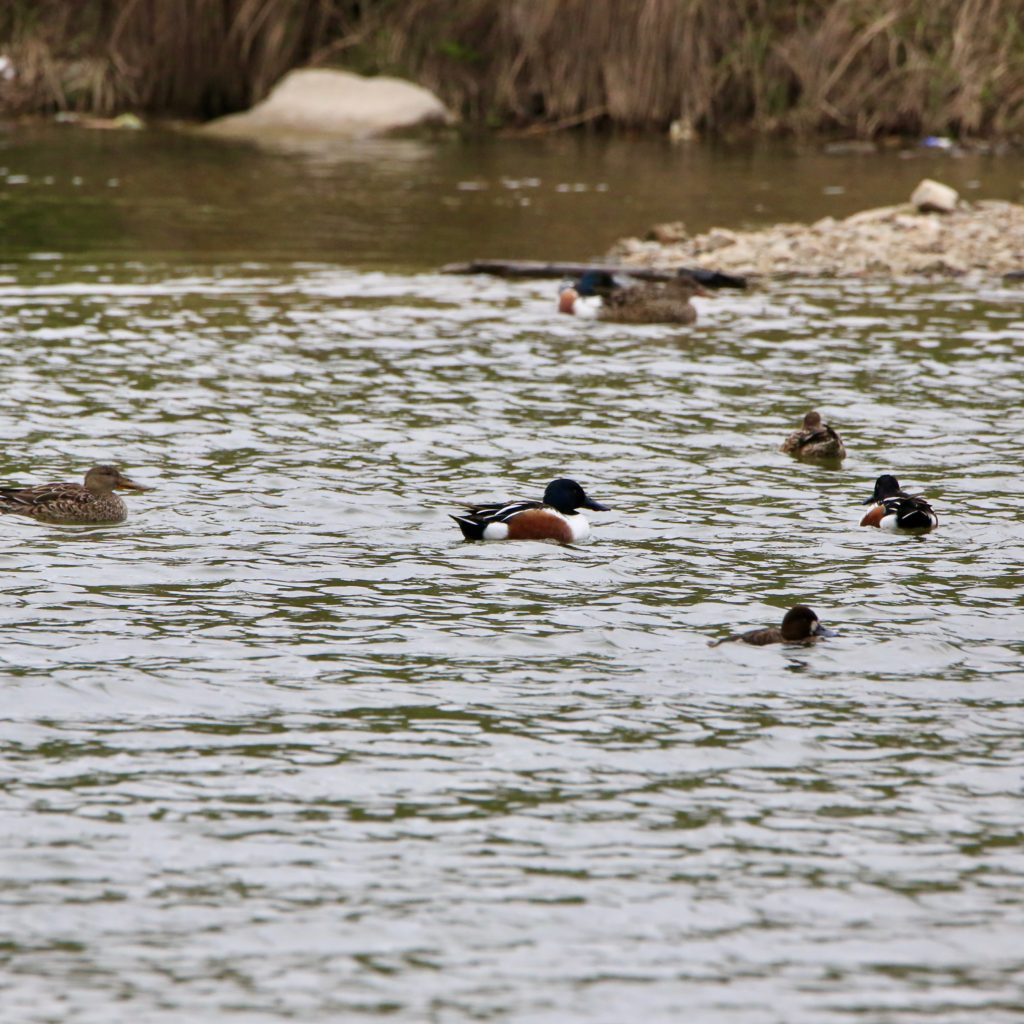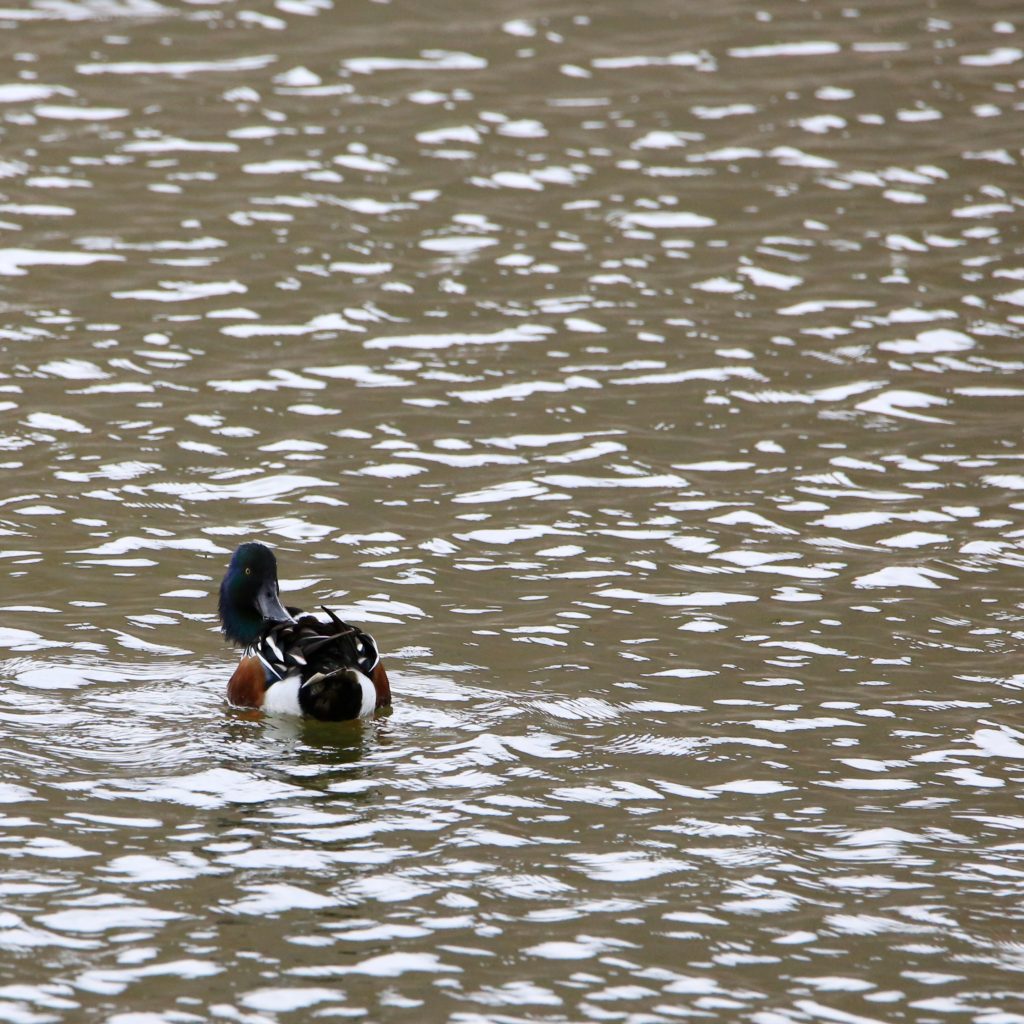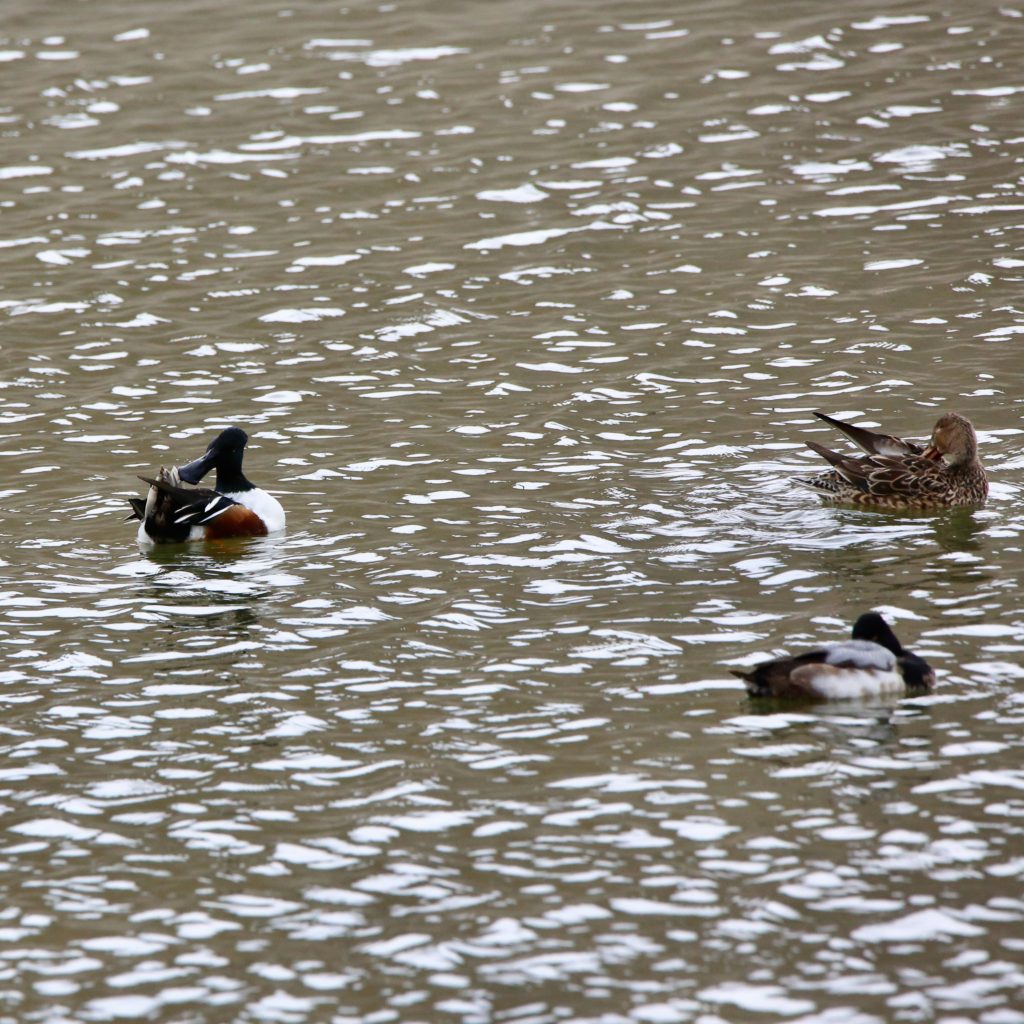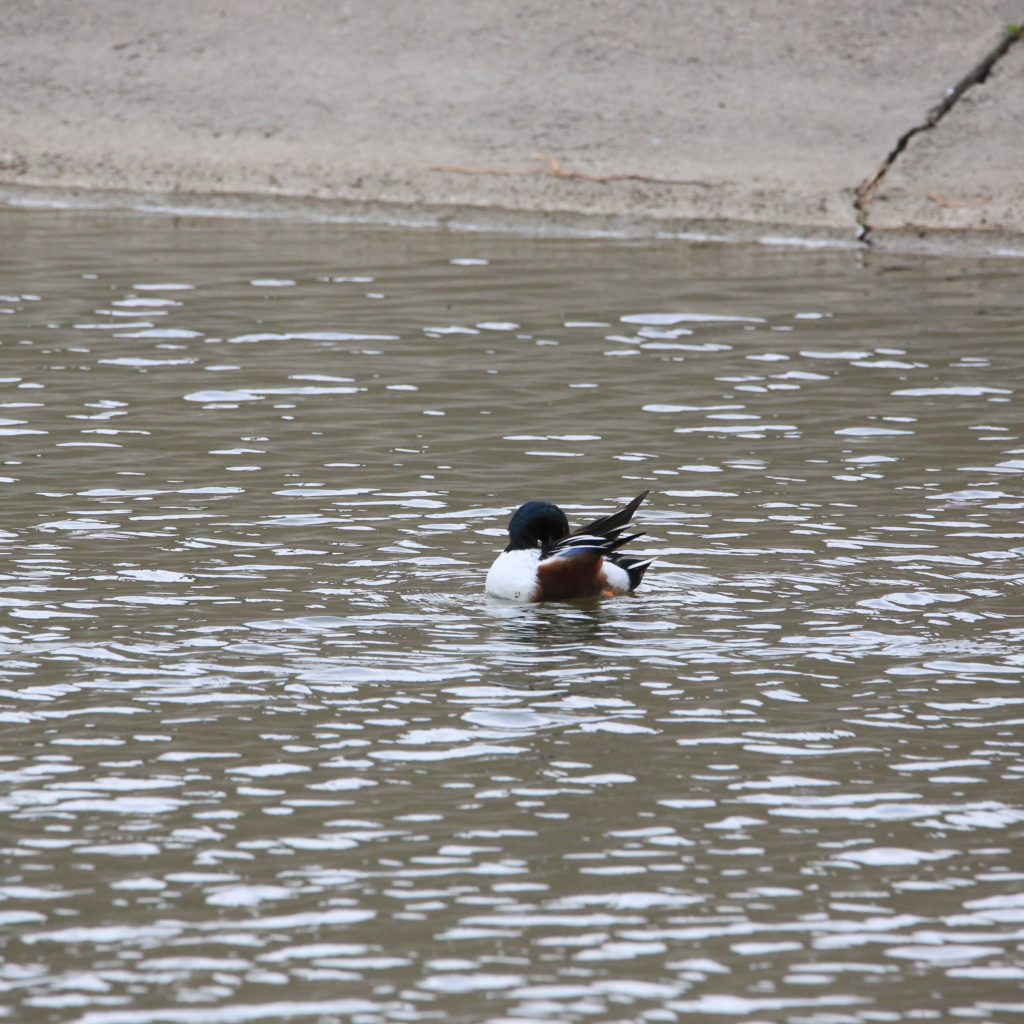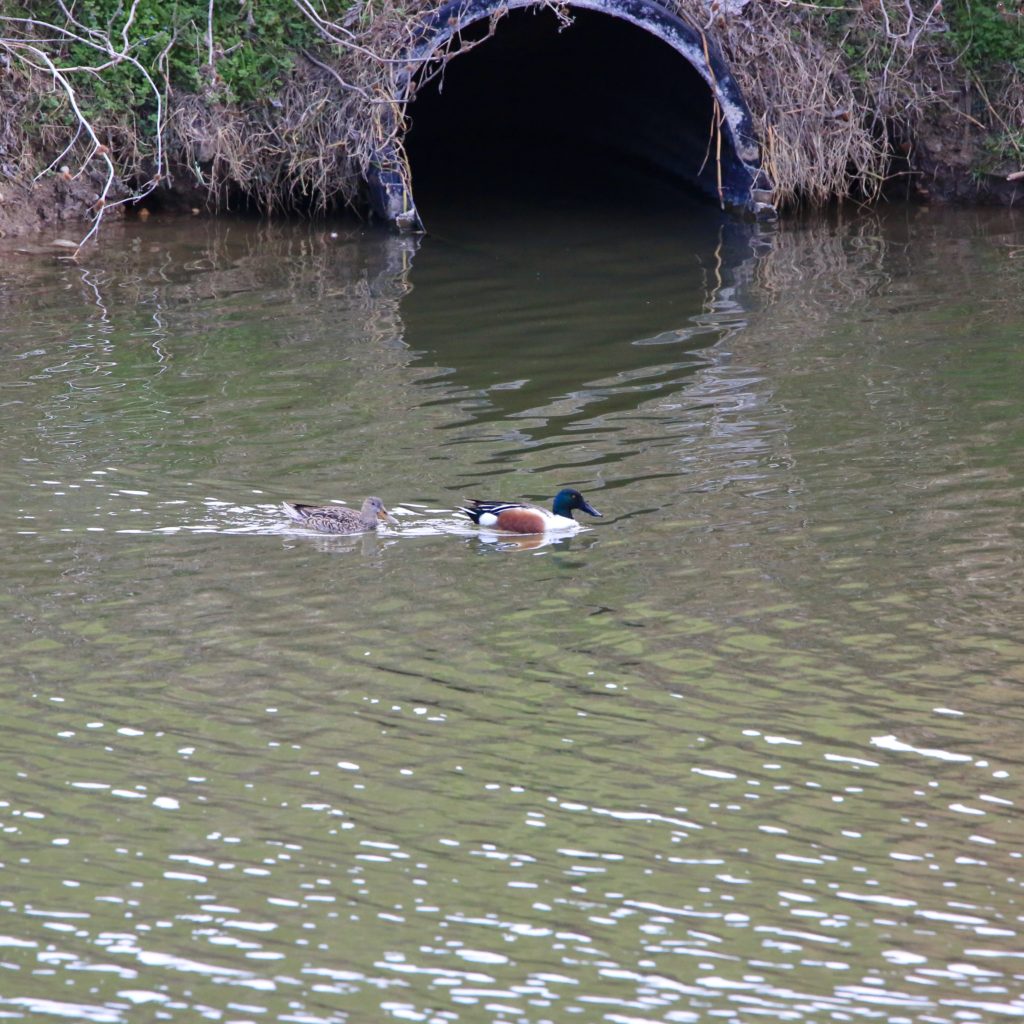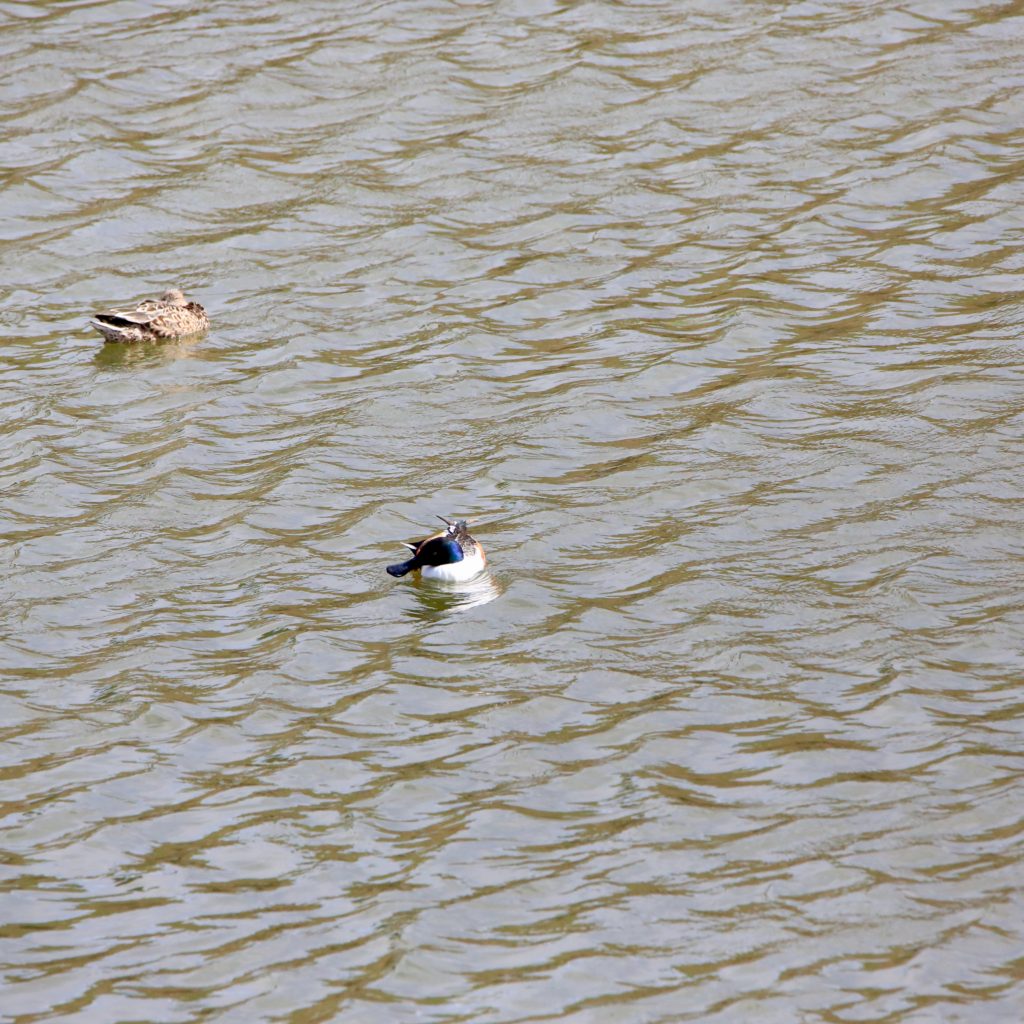
Northern Shoveler
A Northern Shoveler is a fun bird to see while bird watching. Below are some tips to help you identify Northern Shovelers. We have also put together a list of fun Northern Shoveler t-shirts, Northern Shoveler bird patches, bird houses, bird feeders, binoculars, stickers and other fun bird watching items.
About Northern Shovelers
The Northern Shoveler is a common duck that breeds in various sections of the world such as Europe, Asia, North America, Africa, and India. In Europe, it is commonly referred to simply as “Shoveler”.
Description and Identification
Northern Shovelers are 19 inches long with a wingspan of over 30 inches. The most distinctive
feature of these ducks is their large spoon-shaped bills which have over a hundred comblike
projections called lamellae along the sides. Their bills are 2.5 inches long and twice as wide at the
tip as they are at the base. These birds have earned their name due to their shovel-like bills.
Male Northern Shovelers have bright chestnut underparts, white chests, and an iridescent green
head, neck, and speculum. Alike to other dabbling ducks, the females are drab mottled brown.
Although weighing about 1.3 pounds, these birds are great at flying.
Northern Shoveler Size
Length: 48 cm
Weight: 600 g
Wingspan: 76 cm
Both the male and the female ducks are averagely the same size.
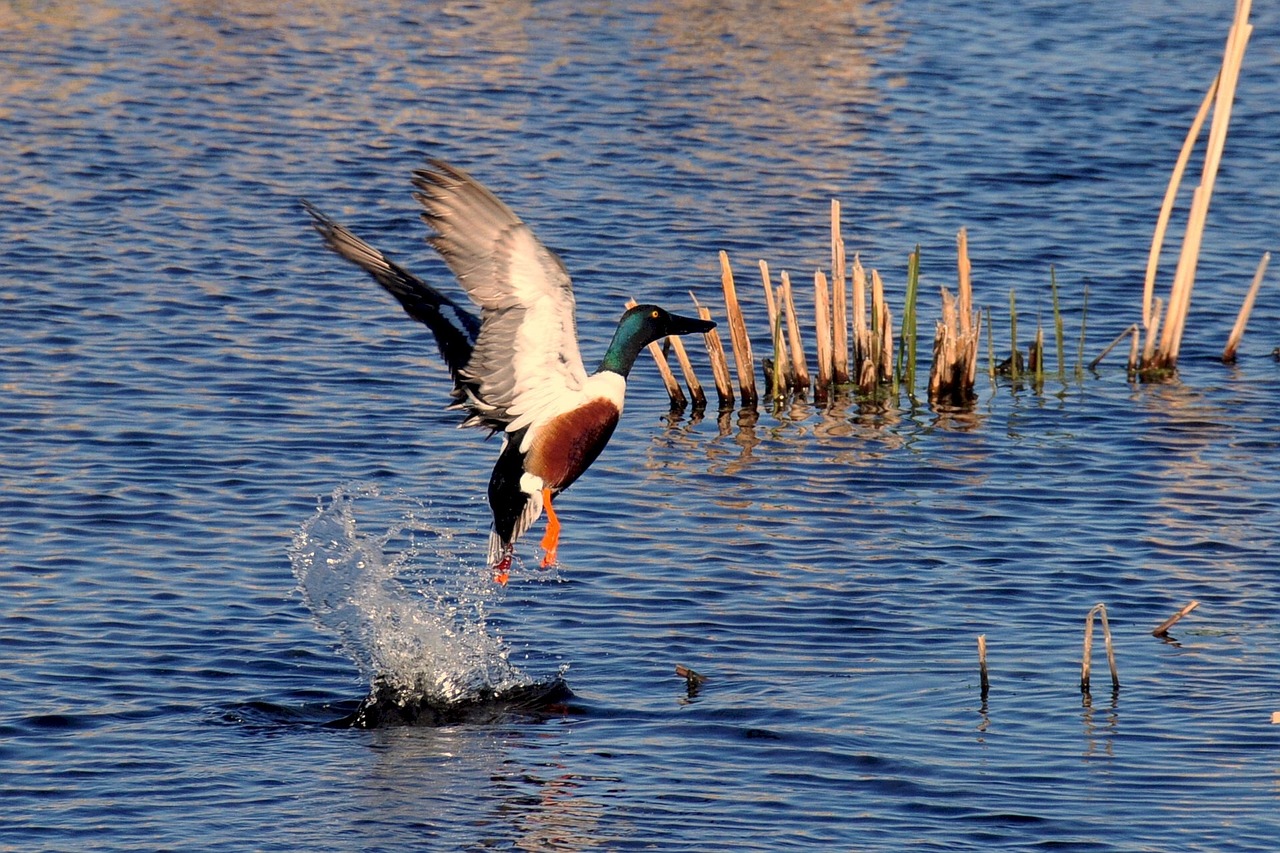
Northern Shoveler Appearance
The feature that stands out the most is their long, black bill. The drakes have a long, dark green head, white breast, and a chestnut belly and flanks. They also have colorful blue and green wings that are separated by a thick white line. That runs lengthwise from the tips of the wings. During the fall, the males develop white crescents on the sides of their faces.
The females are a bit duller with brown plumage that has whitish spots. They have gray wings and a gray-tinged long, broad bill that is orange on the lower mandible.
Northern Shoveler Life and Behavior
Northern Shovelers are a fairly quiet species. They are most active during the breeding season. The males put on displays to attract females both in the air and in the water. Despite their bulky appearance, northern shovelers are smooth fliers.
After courtship, the females lay about 9 eggs, which the drake helps to guard and raise. Drakes are aggressive and will violently defend their partners and nesting grounds if threatened.
Northern Shoveler Feeding
Northern Shovelers feed through a unique mechanism called filter-feeding. These birds draw water
into their bills and pump it out through their sides with their tongue. While doing so, small food
particles are filtered out by the lamellae that line the edge of their bills. These food particles might
include mollusks, insects, seeds, crustaceans, and leaves and stems of plants. Other than these
they also eat snails, small minnows, and water beetles. Northern Shovelers are very rarely
observed feeding on land. These birds usually eat in flocks, assisting each other by swimming in,
or circling a certain area in groups due to which the food particles get churned to the surface.
Individuals can produce the same effect by swimming in a tight circle to create a whirlpool. These
birds can also use their wings to swim underwater in shallow waters to feed.
They feed on both plant and animal life. They skim the floor of water bodies using their specialized bills that have small, comb-like structures that act as sieves. They feed on invertebrates such as crustaceans for protein sources. Their special bills give them an edge over other ducks and hence they have little competition for food.
Northern Shoveler Habitat
Northern Shovelers most commonly breed in shallow marshlands and wet grasslands with dry
areas nearby for nesting. They prefer regions with shallow waters and muddy bottoms. In summers
they can be found in prairies, marshes, or tundra, in close proximity to regions with shallow water.
Their wintering grounds are generally freshwater marshes and swamps. Northern Shovelers
usually reside in stagnant and polluted waters that are generally unfavorable to other ducks.
They live in marshy areas that are rich in crustacean life and aquatic plants such as ponds and shallow lakes. They also reside in wet grasslands.
Range and Migration

Northern Shovelers are distinctive dabbling ducks widespread in Europe, America, and northern
Asia. These birds migrate to north-east Africa, southern China, India and southern North America
for their wintering grounds. Being strong migrants, these birds are spotted as vagrants in South
Africa, New Zealand and Australia.
Northern Shovelers Nesting
Northern Shovelers are non-monogamous ducks. They usually form pairs during winter, or during
spring migration. One female is courted by many males which all surround her on water. The
males attempt to lead females away by swimming away, or through a short flight. Females fly away
with the males they choose. Pairs usually stay together throughout the breeding period, but
occasionally males find a second female to mate with. Females build nests on small depressions in
the ground in regions with tall vegetation, or under small bushes. After laying 8-12 eggs, the
females incubate the eggs for over 3 weeks. Males generally leave during the incubation period out
of boredom, while the females teach the ducklings to feed themselves by finding plants and
catching insects.
Ornithology
Bird Watching Academy & Camp Subscription Boxes
At Bird Watching Academy & Camp we help kids, youth, and adults get excited and involved in bird watching. We have several monthly subscription boxes that you can subscribe to. Our monthly subscription boxes help kids, youth, and adults learn about birds, bird watching, and bird conservation.
Bird Watching Binoculars for Identifying Northern Shovelers
The most common types of bird watching binoculars for viewing Northern Shovelers are 8×21 binoculars and 10×42 binoculars. Bird Watching Academy & Camp sells really nice 8×21 binoculars and 10×42 binoculars. You can view and purchase them here.
Northern Shoveler T-shirts
If you love the Northern Shoveler you should purchase a Bird Watching Academy & Camp T-shirt. To help support bird conservation we donate 10 percent to bird conservation activities.
Northern Shoveler Iron On Patches
Kids, Youth, and Adults love to collect our Bird Watching Academy & Camp iron on patches. Our bird watching patches help you keep track of the birds you have seen an identified. You can also display the patches on our Bird Watching Academy & Camp banners.
The Northern Shoveler is a great iron on patch to start your collection with. The patches are durable and can be sewn on or ironed on to just about anything.
Northern Shoveler Stickers
Stickers are a great way for you to display your love for bird watching and the Northern Shoveler. We sell a monthly subscription sticker pack. The sticker packs have 12 bird stickers. These sticker packs will help your kids learn new birds every month.
Bird Feeders for the Northern Shoveler
There are many types of bird feeders. Here are our favorite bird feeders for your backyard. We use all of these bird feeders currently. Kids will have a great time watching birds eat at these bird feeders. Using this collection of bird feeders will provide a wide variety and many types of birds.
Best Bird Houses for the Northern Shoveler
There are many types of bird houses. Building a bird house is always fun but can be frustrating. These 4 bird houses have become our favorites. Getting a bird house for kids to watch birds grow is always fun. We spent a little extra money on these bird houses but they have been worth the higher price and look great.


